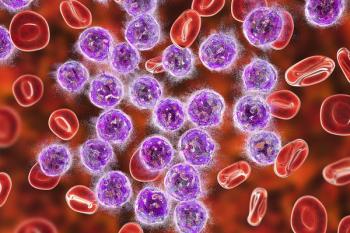
Global Lung Cancer Burden Suggests Need for Tailored Measures
Researchers suggested that based on their findings, increased efforts are needed to implement intervention strategies tailored to local settings to effectively decrease the global lung cancer burden and reduce health inequality.
A study published in Cancer comparing the risks of lung cancer death in China and other regions of the world found that the trends of lung cancer age-standardized death rates (ASDRs) and age-standardized disability-adjusted life year (DALY) rates as well as the population attribution fractions (PAFs) of risk factors vary markedly by region.
The findings suggest a need for tailored measures to reduce lung cancer burden and improve health equity, especially in China, which are among the highest globally.
“Increased efforts are needed to design and improve intervention strategies tailored to local settings to effectively decrease the global [lung cancer] burden and reduce the health inequality attributable to [lung cancer],” the authors wrote.
Utilizing the Global Burden of Disease (GBD) 2017 study, researchers extracted the number of lung cancer deaths, ASDRs, age-standardized DALY rates, and PAFs of risk factors for lung cancer deaths between 1990 and 2017. Using the annual percentage change (APC) to quantify the trends of lung cancer, the relationship between the APC of lung cancer ASDR and Socio-demographic Index (SDI) was evaluated among China and other countries.
Globally, the ASDR for lung cancer decreased in men (APC, -0.66%; 95% CI, -0.69 to -0.62) but increased in women (APC, 0.31%; 95% CI, 0.26-0.36) from 1990 to 2017. Moreover, lung cancer years of life lost accounted for the majority of lung cancer DALYs both globally and in China.
However, countries varied in their SDI and their risk factors with the highest PAFs. Because this study only reported the profile of countries at the national level, the investigators suggested that further research is needed to provide more precise information for lung cancer control.
“In regions with different SDIs, [lung cancer] death and DALY rates and the contribution of risk factors present diverse trends,” the authors explained.
“Almost all regions experienced an increasing trend in [lung cancer] deaths attributed to high fasting plasma glucose,” the authors noted. “This suggests that the promotion of a healthy lifestyle such as physical activity, healthy eating, and obesity prevention should be constantly strengthened across the world.”
Specifically in China, the ASDRs increased both for men (APC, 1.12%; 95% CI, 1.03-1.20]) and women (APC, 0.80%; 95% CI, 0.70-0.89]). Overall, the increased lung cancer death numbers observed among men (n = 312,798) and women (n = 139,115) in China accounted for 59.39% and 43.01% of global increases.
In China, the risk factors with the highest PAFs of lung cancer death were smoking and ambient particulate matter. Importantly, the ASDRs for lung cancer associated with ambient particulate matter in China ranked second globally.
“Without effective control, the [lung cancer] death rate and death toll in China will surge further, which will pose a severe threat to Chinese public health and will seriously hinder the realization of global noncommunicable disease control goals,” the authors wrote.
Recently, China implemented a series of policies to try and tackle health impacts due to smoking and ambient air pollution. Included in these strategies is Healthy China 2030, which is intended to mobilize government and relevant departments, at all levels, to try and create a healthy ecological and social environment. Additionally, the program will be encouraging individuals to adopt a healthy lifestyle.
“Given the rapid population aging and economic development in China, more stringent control measures on ambient particulate matter pollution and smoking are needed to control the rising burden of LC death and disability, which is critical to achieving the goals of Healthy China 2030, the Global Non-communicable Diseases Action Plan, and the third United Nations Sustainable Development Goal,” the authors wrote.
Reference:
Wang N, Mengersen K, Tong S, Kimlin M, Zhou M, Hu W. Global, Regional, and National Burden of Lung Cancer and Its Attributable Risk Factors, 1990 to 2017. Cancer. doi: 10.1002/cncr.33078.
Newsletter
Stay up to date on recent advances in the multidisciplinary approach to cancer.





















































































